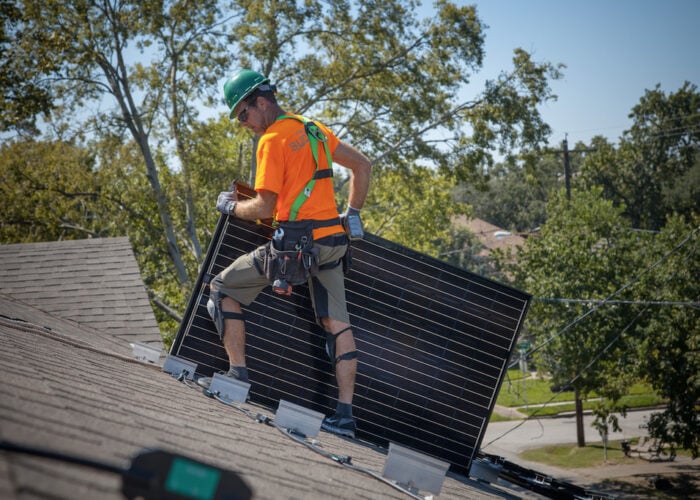Evonik Industries has now developed what it calls the “missing link” necessary for continuous production of flexible solar modules. Evonik has introduced a highly transparent and also weathering-resistant barrier film based on polymethylmethacrylate (PMMA) that can replace glass plates as a front cover.
Problem
Unlock unlimited access for 12 whole months of distinctive global analysis
Photovoltaics International is now included.
- Regular insight and analysis of the industry’s biggest developments
- In-depth interviews with the industry’s leading figures
- Unlimited digital access to the PV Tech Power journal catalogue
- Unlimited digital access to the Photovoltaics International journal catalogue
- Access to more than 1,000 technical papers
- Discounts on Solar Media’s portfolio of events, in-person and virtual
If the barrier film protecting the solar cells from environmental effects is of plastic rather than glass, lightweight, flexible and therefore cost efficient thin-film solar cells can be realized with a number of semiconductor materials. They can be produced in a continuous roll-to-roll manufacturing process. The covering film should have the same properties as glass as far as possible. That means it has to act as a barrier to water vapor and oxygen, allow high light transmission, adhere well to solar cells, and be electrically insulating, flexible, and cost efficient. It should also have high weathering and UV resistance. In short, this would mean developing an entirely new system solution for the photovoltaics industry.
Solution
PMMA has many of the required properties such as high transparency, weathering resistance, and UV stability. To meet the other requirements, Evonik has been developing a multilayer film consisting of several functional and bonding layers and an outer PMMA layer. The ‘Rohaglas’ protects the underlying layers of the film very efficiently against the effects of weathering, thus ensuring the necessary longevity. In the spectral range relevant to photovoltaics, Evonik's new film achieves transmission rates of 88 and 90 percent in the short-wave and long-wave regions; these figures are comparable to those for glass plates.
Applications
Flexible thin-film solar modules.
Platform
Evonik say’s the multilayer film will more than satisfy the standard in regard to the damp heat test and UV resistance. Its water vapor barrier is 10-3 g/(m2d). The first customers are already testing the film of 1200 mm width for use in their flexible thin-film solar modules.
Availability
The film is currently being put through tests for compliance with the IEC 61646 standard for thin-film solar cells.







